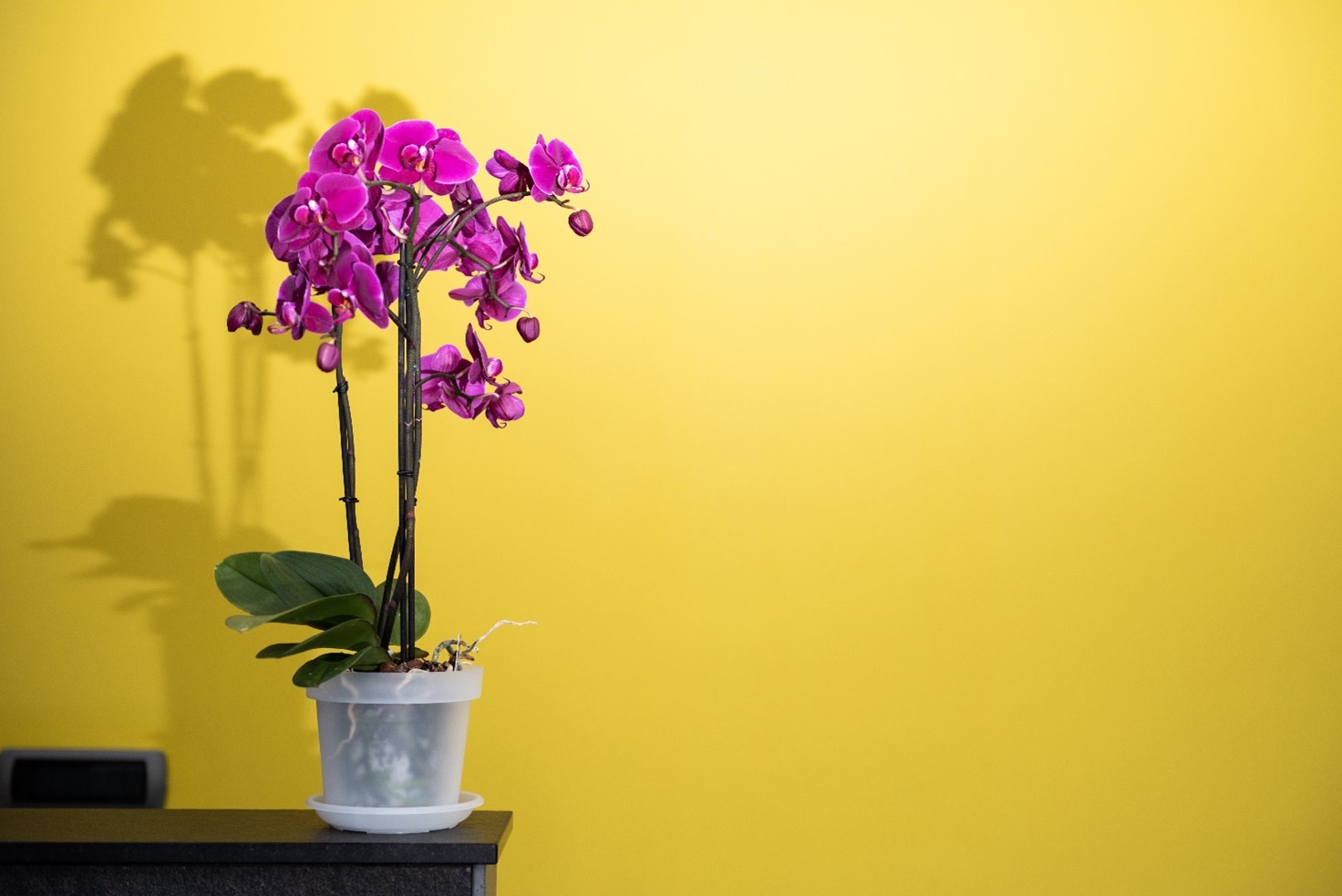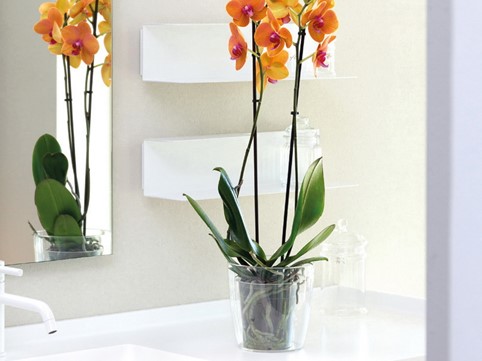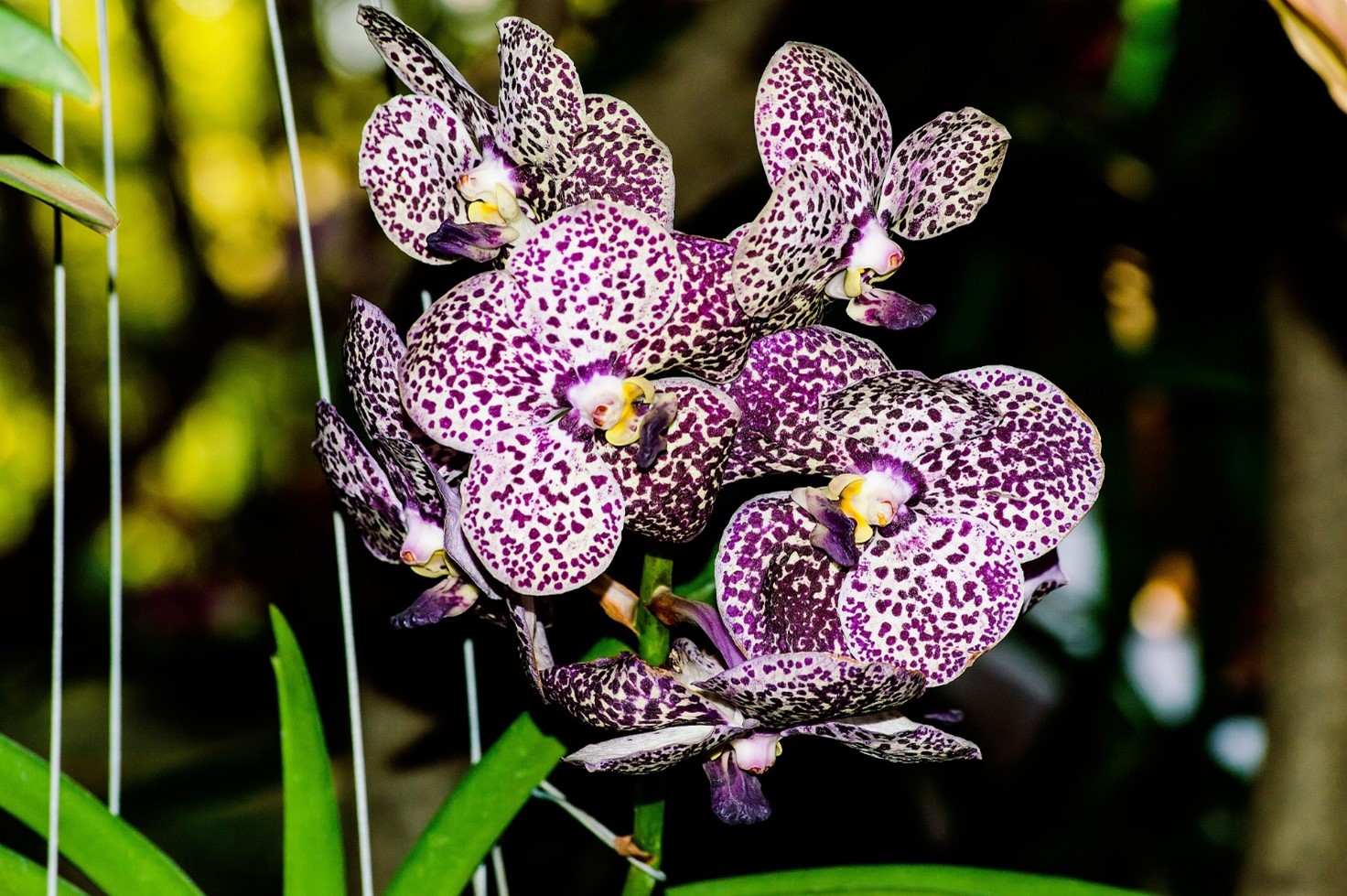The phalaenopsis, or butterfly orchid, is rightly an extremely popular houseplant. Exotic and colorful, its style suits any interior. What's more, if you know what you're doing, it can bloom for weeks on end.


Of all orchid types, phalaenopsis are the easiest for beginners. Anyone can take care of them. As long as you follow a few simple rules!
Origin of phalaenopsis orchids
To understand how to care for your butterfly orchid, a brief look at its origins is in order!
Orchids are originally epiphytic plants that grow in tropical zones, where they usually live attached to tree trunks or rocks, without parasitizing them. Their roots serve both to anchor them and to absorb water.
Of course, the orchids you buy no longer come from the other side of the planet. They are mainly grown in Holland, in gigantic greenhouses, where they undergo numerous treatments to boost their flowering and help them withstand the conditions of indoor cultivation.


In what type of pot should you grow your butterfly orchids?
The Phalaenopsis orchid is easy to live with, provided you give it the right amount of water, light and humidity. In the right conditions, it can flower for 2 months or more.
A transparent culture pot. What's in it?
In pots, as in nature, orchids breathe through their roots. This explains why some roots grow outside the pot. They must not be cut! The key to healthy orchids is to ensure that the roots are healthy. So be careful not to smother them or let them rot. That's why most growing pots are transparent! This makes it easier to check the condition of the roots.
Opt for a double pot
Many growers recommend growing Phalaenopsis orchids in a double pot: a transparent plastic growing pot, which is placed inside a decorative pot. This offers three advantages:
- The transparent pot makes it easy to check the condition of the roots without disturbing the orchid, simply by lifting the growing pot from the decorative pot.
- The decorative pot can be matched to your interior for a more attractive presentation.
- With a double pot, you can easily change the planter as you wish, without disturbing your orchid.


What type of pot should I choose?
Most orchids will produce more flowers if they are a little cramped. So don't be in too much of a hurry to repot your orchid if it seems to be running out of space.
However, the pot must be large enough to allow good aeration of the roots.
Many orchid pots are tall. In this case, you can place clay balls in the bottom of the pot to improve drainage and prevent the roots from coming into direct contact with water.
How to care for a potted orchid?
To take good care of your orchid, it's important to understand that in their native environment, orchids benefit from plenty of humidity and light, but no direct sunlight. That's why your orchid will bloom longer if you can provide it with a soft (no direct sunlight), warm (no cold drafts) and somewhat humid environment.
Don't cut the aerial roots (unless they're obviously dried out), even if you don't like the look of them, they're vital for your orchid!
If you can, you can take your orchid outdoors in summer. Choose a bright spot without direct sunlight.
☀ Light
Avoid direct sunlight; your orchid will benefit from light behind a curtain or blinds.
Tip: Phalaenopsis leaves should be a beautiful green. If they are tinted red, the plant is receiving too much light. Too much sun can be fatal. But too little light can prevent it from flowering.
❀ Flowering
When you buy an orchid, make sure the buds are unopened and healthy (not dried out), so you can enjoy a long flowering period (several weeks).
After the last flowers have fallen, cut the stem near the base, just above the lowest node, and cut diagonally. This will help stimulate the growth of a new flower stem. And if you continue to care for your orchid, it could bloom again!


💧 Watering and maintenance
The key to watering orchids is not to overwater. This is probably the most difficult aspect to master. Because the right amount of water for an orchid varies according to the type of orchid, the type of mix it's in and the environment it's growing in!
Tip: before watering, check the color of your orchid's roots. If they're bright green, you don't need to water. If, on the other hand, they're gray and dull, they're thirsty!
Most people new to orchids think they need a lot of water to grow well, but this is not the case. Unless your orchids are growing outdoors, hanging in baskets where they can dry out completely within an hour of watering, your orchid needs very little water.
The best way to water an orchid is to water it generously, letting the water run off the bottom of the pot until the plant and its substrate are completely saturated. Once the plant has been watered, empty the overflow until the next watering. Never allow water to stagnate in the pot, or the roots will rot.
Remember to mist the foliage regularly to maintain a certain degree of humidity. However, make sure you also clean the leaves regularly to avoid unsightly stains or dust that could clog the plant's pores (but avoid "polishing" products).
You can place your orchid on a bed of clay balls to increase humidity.


🌡️ Temperature
Phalaenopsis orchids are moderately fond of the dry heat of our homes in winter. So avoid placing them too close to a heat source (fireplace, radiator, etc.).
If you want to extend the life of your orchid, and especially if you want to make it bloom again, give it a rest. In this case, place it in a cool place (maximum 15°C) for a month and reduce watering.
☠️ Toxicity
Non-toxic for animals.
🦟 Diseases, pests and parasites
Orchids can be attacked by red spiders or scale insects.
🗑 Potting soil and propagation
Soil: The substrate plays an important role in how often orchids need to be watered. In general, phalaenopsis orchids are potted in bark shavings, which don't hold much water and drain quickly.
Repotting: You should repot your orchids in new bark every two years. Especially if the roots develop outside the pot. Never repot a flowering orchid. Wait until the end of flowering, preferably in summer.
Remove the orchid from the old bark (which you can throw on your compost heap!) and cut off the dead roots (darker and shriveled than the healthy, firm, light-colored roots). Put the orchid back in the pot (or change the pot) and fill the pot with new bark.
Several phalaenopsis orchids in the same pot?
You can, of course, put 2 or more orchids in the same pot. In principle, this poses no problem. As long as a few rules are observed:
- Assemble plants with the same watering, light and temperature requirements. Growing several phalaenopsis in the same pot is therefore no problem at all.
- Don't overtighten to allow air to circulate around the roots.
- Remove diseased plants
Suggestion: keep the growing pots separate so that you can remove diseased or defoliated plants without disturbing the whole without risk. And place these pots on a base of clay pebbles to create a moist environment, without allowing the roots to remain in the water (which would cause them to rot).

